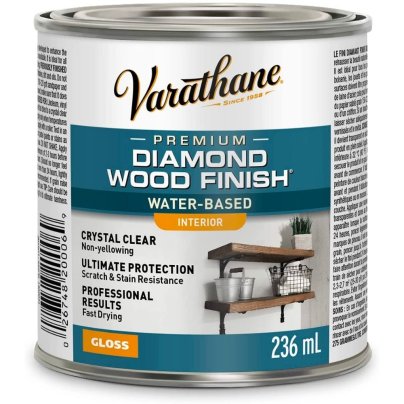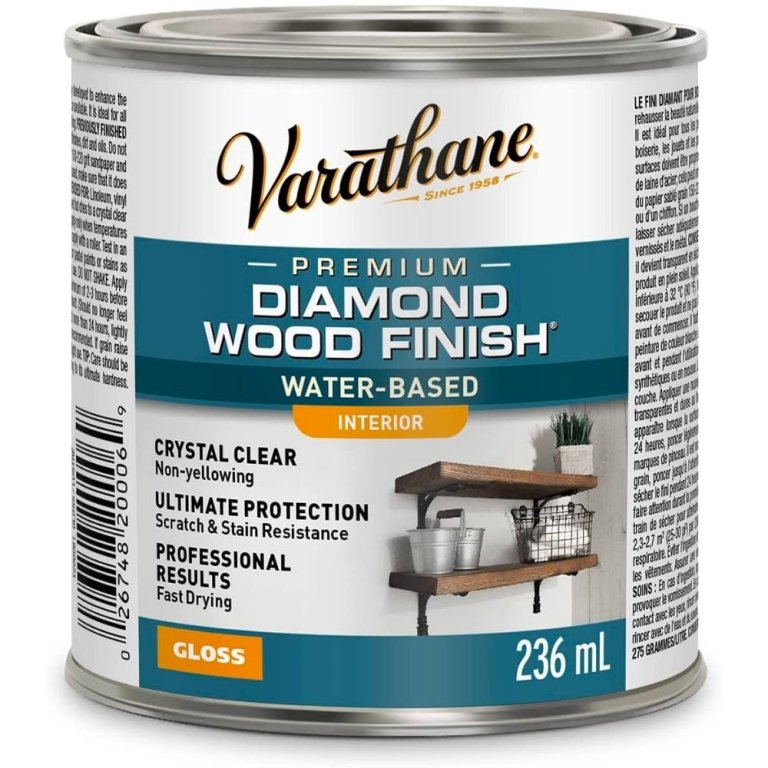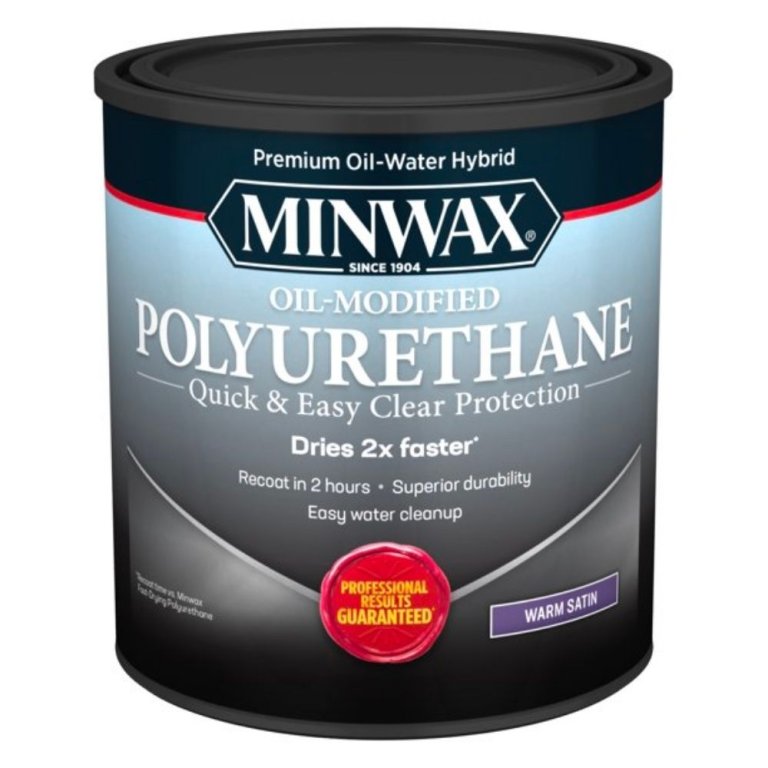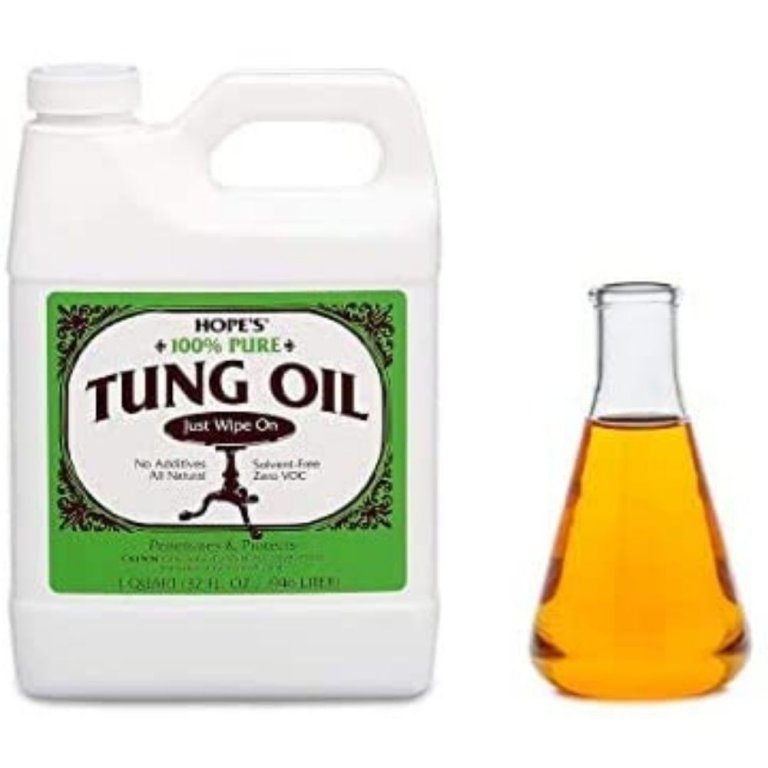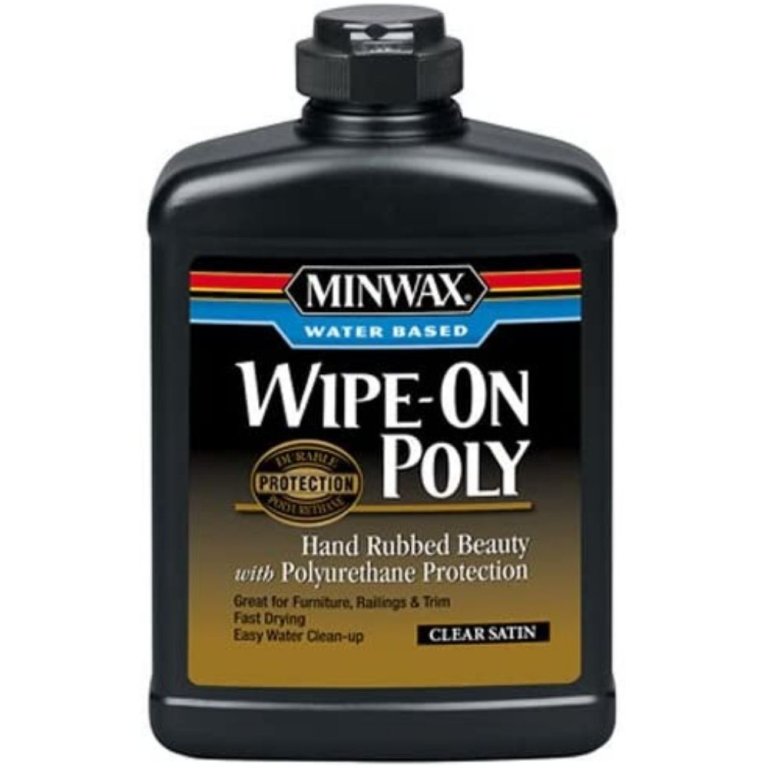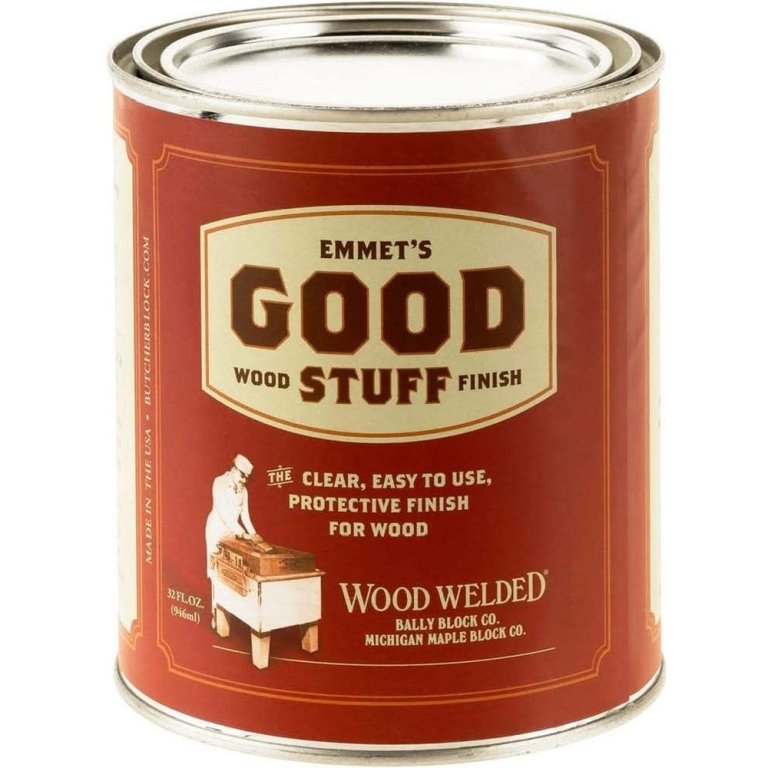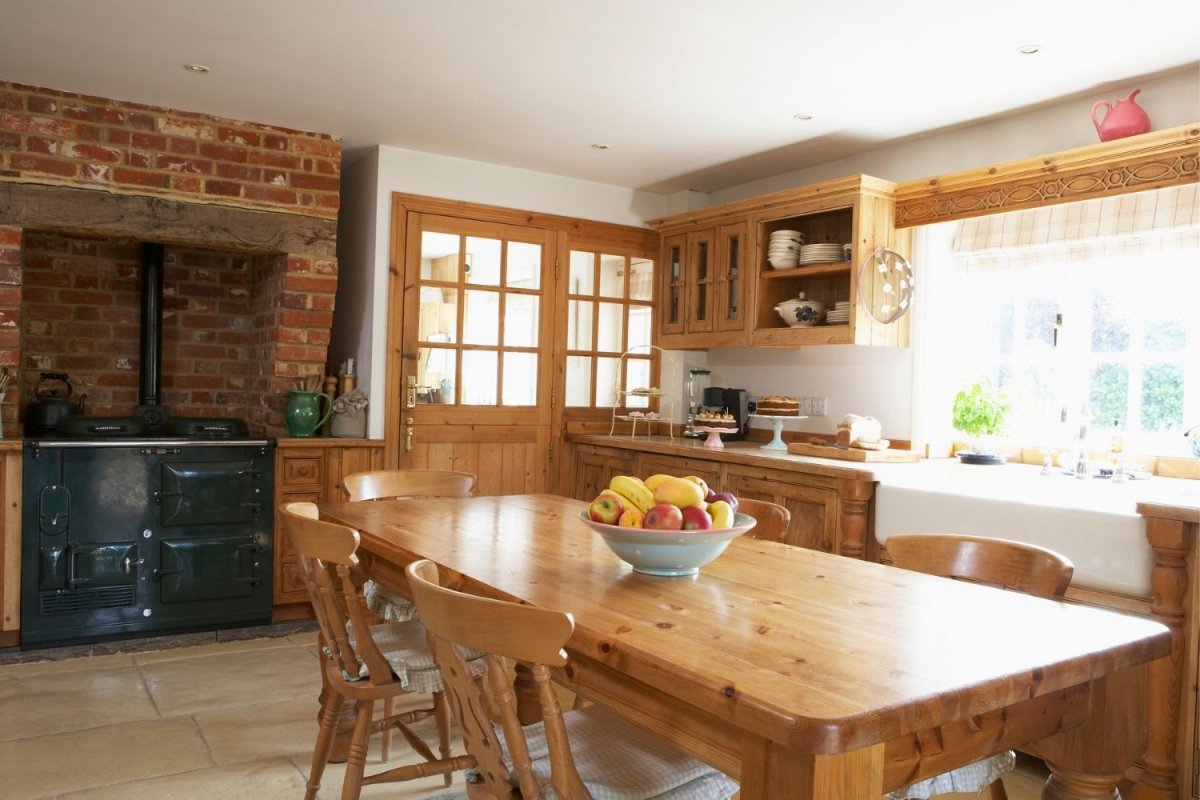
We may earn revenue from the products available on this page and participate in affiliate programs. Learn More ›
The right finish on wood not only brings out its natural warmth, but it also provides long-term protection. However, not all finishes are the same, and different products are suitable for different applications. If you’re looking for the best finish for kitchen table use, consider some specific factors, particularly food safety.
This guide discusses the different types of products available and their individual characteristics to help DIY enthusiasts and novices find the best finish for a wood kitchen table. Whether you’re protecting a new piece of furniture or reviving an older one, the following products have you—and your table—covered.
- BEST OVERALL: General Finishes Arm-R-Seal Oil Based Topcoat
- RUNNER-UP: Varathane 200061H Water-Based Ultimate Polyurethane
- BEST BANG FOR THE BUCK: Minwax Water Based Oil-Modified Polyurethane
- BEST OIL: HOPE’S 100% Pure Tung Oil, Wood Finish for Furniture
- BEST WAX: Howard Products Wax-It-All Food Safe Wax
- BEST WIPE-ON POLY: Minwax Water-Base Wipe-On Polyurethane 16fl oz
- ALSO CONSIDER: Grizzly Industrial H2372 – Good Stuff Wood Finish

What to Consider When Choosing the Best Finish for Your Kitchen Table
Kitchen and dining room table restoration is quite a popular project, so manufacturers have responded with many different products. The application method and the type of finish each product provides differ, making choosing the right product confusing. Important considerations include the type of finish, its durability, ease of application, odor, and curing time.
Type of Finish
First, learn about the basic types of wood finish.
- Wax has been used as a furniture finish for centuries. Probably the most popular form, carnauba wax is usually sold as a paste that can be brushed or rubbed into the wood grain. Sometimes referred to as “Brazil wax,” carnauba wax is a natural product made from tree fronds. Often mixed with beeswax, it may have natural oils added.
- Penetrative tung oil, another natural product, is made from the nut of the tung tree. Always choose pure tung oil rather than derivatives.
- Shellac is a resin deposited on trees by a small Asian beetle. Traditionally sold as flakes dissolved in alcohol, shellac provides modest durability, so it’s usually blended with other products.
- Varnish, a popular finish that comes in a water- or oil-based format, may be flammable in liquid form. Ingredients vary widely. Oil-based varnishes, which contain solvents, are still widely available, but they’re generally considered to be harmful to the environment.
- Urethanes or polyurethanes, synthetic rubber polymers that offer a degree of flexibility while also being very durable, are often used in varnish. They can be oil based or water based.
- Wipe-on products combine the warmth of rubbed finishes like wax with the toughness of urethanes. They are available in solvent- or water-based liquids or gels.
When choosing a finish, consider the wood surfaces you intend to use it on and the impact the finish will have on their color. Softwoods, such as pine, have a much more open grain than a hardwood like oak. If the finish is penetrative (usually oils and waxes), it can soak in before the required effect is achieved.
Most oil-based varnishes for wood application will yellow slightly with age, but water-based versions usually don’t. Wax finishes build up a rich patina but can trap dirt if not cleaned and reapplied regularly—a significant factor for kitchen tables that will be used for food prep.
Durability
All the finishes mentioned here have reasonable durability, though waxes and oils take time and effort to build up. Most experts generally recommend that users reapply oils and waxes annually.
Urethane- and polyurethane-based products are the toughest finishes for a kitchen table. Once dry, they can protect against all kinds of spills as well as take a reasonable amount of heat. Polyurethane finishes can last many years without attention.
Varnishes form a skin on the surface of the wood. Because high-gloss versions can look a little like plastic, satin is a popular alternative. Any chips or scratches are more obvious than in wood treated with oils and waxes, which soak into the grain. To avoid a “milky” discoloration, a varnish must be applied correctly. Try a test patch in an unobtrusive area, such as on the underside of the tabletop, before application.
Ease of Application
Polyurethane varnish is the quickest and easiest way to finish a kitchen table. Most flow well when brushed on and leave few, if any, marks. Though it’s important to follow the manufacturer’s instructions carefully, properly finishing a kitchen table generally requires two to four coats of varnish.
Waxes and oils are usually applied with a cloth or brush. They require more physical effort, though modern formulations are easier to work with than traditional products.
Cleanup is another consideration. If using oil-based products, the brushes must be cleaned with solvents. Take care when throwing away used cloths, as they may pose a fire risk. Some oil finishes, such as linseed oil, which is often used on wood furniture, can combust spontaneously, so pay close attention to any manufacturer warnings. Water-based kitchen table finishes don’t pose the same risk, and cleanup requires only dish soap and water.
Odor and Curing Time
Always consider safety when applying any finish. Oil-based varnishes, in particular, may have a strong, unpleasant odor and can cause dizziness or respiratory difficulties. Carry out the work in a well-ventilated area. In addition to some form of respiratory protection, wear goggles or safety glasses and painter’s gloves.
Curing time varies widely. Polyurethanes dry comparatively quickly, but it still can take several hours. Some can be recoated in a couple of hours, while others recommend 24 hours before applying a second coat. If dust or dirt is in the air during this time, it can settle into the damp surface and ruin the finish. Try to work in a dusted and vacuumed area that can be closed off afterward.
Waxes and oils typically must dry overnight before the application of additional coats to allow them to penetrate wood surfaces and provide maximum protection. Oil finishes can take several days to fully cure.
Our Top Picks
The previous section provides valuable information to help users understand the key characteristics of the best finish for kitchen tables. All the following products are manufactured by well-respected brands.
Best Overall
General Finishes Arm-R-Seal Oil Based Topcoat
Pros
- Stain-resistant
- Satin finish
- Food-safe after curing
- Lasts for several years
Cons
- Should be applied in a well-ventilated area
- Combustible and toxic before drying
- Pricey
Product Specs
- Type: Urethane resin
- Ease of Application: Easy
- Coverage Area: 400 to 500 square feet
- Curing Time: 12 hours
General Finishes Arm-R-Seal is a urethane resin that can be wiped on with a cloth or applied with a foam brush to leave a professional finish. It dries very hard to create a durable, stain-resistant barrier. The satin appearance is pleasantly warm without the unnatural shine of some varnishes. In fact, the finish lends a slightly orange glow that may be more obvious on lighter wood surfaces.
Because Arm-R-Seal is oil based, apply it in a well-ventilated area. It is also combustible and toxic while liquid, though food-safe when dry. Once dry, it normally provides several years of protection.
Get the Arm-R-Seal topcoat at Amazon or at The Home Depot.
Runner-up
Varathane 200061H Water-Based Ultimate Polyurethane
Pros
- Comes in gloss, semi-gloss, matte, and satin finishes
- Dries to the touch in 30 minutes
- Scratch- and stain-resistant
- Affordable
Cons
- May require 3+ coats
Product Specs
- Type: Polyurethane
- Ease of Application: Easy
- Coverage Area: 30 square feet
- Curing Time: 2 hours
Varathane’s water-based polyurethane can be touch dry in as little as 30 minutes and is ready for a second coat after 2 hours. The result is a hard, scratch- and stain-resistant finish. Available in both gloss or satin finishes, it doesn’t suffer the yellowing sometimes associated with oil-based polyurethanes, which means the original color of the wood shows through. Plus, it allows for fuss-free cleanup.
Get the Varathane polyurethane at Amazon or at The Home Depot.
Best Bang For The Buck
Minwax Water Based Oil-Modified Polyurethane
Pros
- Eco-friendly
- Comes in multiple sizes
- Gloss, semi-gloss, and satin finishes
- Multiple application types
- Ample quantity provided
Cons
- Needs to be applied in a well-ventilated area
- May take 4 to 6 hours to cure
- Requires 3+ coats
Product Specs
- Type: Polyurethane
- Ease of Application: Easy
- Coverage Area: 125 square feet
- Curing Time: 2 hours
This Minwax product has the toughness associated with a traditional oil-based product, but it’s more eco-friendly and easier to clean up.
Its odor isn’t as strong as oil-based polyurethanes, although good ventilation is still necessary. Apply the finish with a synthetic brush, foam pad, or lambswool applicator. It can be recoated in 4 to 6 hours. For maximum protection, three coats are required.
Minwax oil-modified polyurethane finish is available as gloss, semi-gloss, or satin. Purchase it in a variety of sizes, from ½ pint to 1 gallon.
Get the Miniwax polyurethane at Ace Hardware.
Best Oil
HOPE’S 100% Pure Tung Oil, Wood Finish for Furniture
Pros
- 100 percent natural formula
- Resists water, alcohol, and food acids
- Can be thinned if required
Cons
- Takes some time to dry between coats
- Should not be used on softwoods
- No total coverage area listed
Product Specs
- Type: Tung oil
- Ease of Application: Moderate
- Coverage Area: Unlisted
- Curing Time: 12 hours
Tung oil has been used to preserve wood for several thousand years; however, lower-quality products often contain additives and solvents. HOPE’S tung oil is a 100 percent pure, natural product.
HOPE’S tung oil is an excellent finish for bare hardwoods, but patience is required. Apply it with a cloth, wiping in a little at a time, a method that allows the oil to penetrate and enhance the grain. Drying time takes about 12 hours, and several coats may be required to develop a protective sheen. Finished surfaces are protected from water, alcohol, and vegetable and fruit acids. This product is not recommended for use on softwoods unless they are first sealed to prevent excessive absorption.
Get the HOPE’S tung oil on Amazon.
Best Wax
Howard Products Wax-It-All Food Safe Wax
Pros
- Natural carnuba, beeswax, and natural mineral oils
- Protects against day-to-day spills
- Suitable for use on many materials
- Safe for use near food
Cons
- Provides less protection than similar products
Product Specs
- Type: Wax
- Ease of Application: Easy
- Coverage Area: Unlisted
- Curing Time: Immediate
A waxed finish brings a natural beauty and warmth to furniture, has a pleasant feel, and smells good. Howard’s Food-Grade Wax combines carnuba for hardness with beeswax and natural mineral oils for nourishment and a pleasant aroma. Application is easy: Simply rub it in with a soft cloth, then buff it to an attractive sheen.
Wax finishes take time to build up and aren’t as tough as polyurethane. While they can protect against day-to-day spills, hot beverages or pans will leave white rings. As a result, wax finishes are perhaps best for wood kitchen tables that aren’t subjected to heavy use.
Howard’s Food-Grade Wax is safe in all food contact areas, including butcher block surfaces. It also can be used to spruce up brass, copper, marble, and a variety of other materials.
Get the Howard Products wax on Amazon.
Best Wipe-on Poly
Minwax Water-Base Wipe-On Polyurethane 16fl oz
Pros
- Comes in multiple colors and sizes
- Durable finish
- Provides a hand-rubbed finish
Cons
- Should be applied in a well-ventilated area
- May require ample care for smooth finish
- Requires 2 to 3 hours between coats
Product Specs
- Type: Wipe-on
- Ease of Application: Moderate
- Coverage Area: Unlisted
- Curing Time: 24 hours
Minwax Wipe-On Polyurethane delivers the appearance of a hand-rubbed finish—usually associated with waxes or oils—but with the toughness of polyurethane. It’s water based, allowing for easy cleanup. While its odor is not as strong as some other products, it should be applied in a well-ventilated area.
To apply it, simply pour it onto a cloth and wipe it onto the wood kitchen table. However, care is required to produce an even finish, so using it is not as fast as brush-on products. Although Minwax claims this wipe-on poly is “ultra-fast drying,” it requires 2 to 3 hours between coats and 24 hours to cure completely.
Get the Miniwax wipe-on polyurethane on Amazon.
Also Consider
Grizzly Industrial H2372 – Good Stuff Wood Finish
Pros
- Low-odor formula
- Suitable for unfinished wood materials
- Water-, alcohol-, and solvent-resistant
Cons
- Pricey compared to similar options
- Thicker than most finishes
- 3+ coats recommended
Product Specs
- Type: Urethane
- Ease of Application: Easy
- Coverage Area: Unlisted
- Curing Time: 4 hours
Grizzly Industrial’s oil-based urethane gel is designed to offer a high level of protection to previously unfinished kitchen tables, particularly maple. Apply it in the same easy manner as wipe-on poly, though it’s somewhat thicker. While it’s relatively low odor, adequate ventilation is still important.
Synthetic oils were added during manufacturing to accelerate drying, though it still takes around 4 hours between coats. Three coats are recommended for maximum protection. Penetration is minimal, and when you’ve finished applying it, the appearance is much like that of brush-on polyurethane. The finish is resistant to water, alcohol, and most solvents.
Get the Wood Welded wood finish on Amazon.
Our Verdict
For a reliable wood finish that covers ample surface area and lasts for years on your wooden table, we recommend the General Finishes topcoat. This wood finish is stain-resistant and fast-acting, with a satin finish that is safe for use around eating areas and food. Alternatively, the Minwax polyurethane finish is a budget-friendly option that comes with ample quantity for multiple applications or large surface areas. It cures in just 2 hours with multiple application types and finishes for your wooden table.
How We Chose the Best Finishes for Kitchen Tables
We researched the most sought-after wood finishes for kitchen tables in their respective categories and discovered that the best options are determined by their type, ease of application, curing time, compatibility with multiple surfaces, and other special features included by top brands.
While searching for the best finishes for wood tables, the most popular types among users were the urethane, polyurethane, wax, and wipe-on options with their easy to moderate application and quick drying times. While many options require multiple applications, many of these top picks fully cure in 2 to 24 hours and last for years between applications. Multiple wood finishes and quantities are offered for select finishes like satin and semi-gloss, with options that are suitable for untreated and softwood tables and materials.
FAQs
Questions may linger about choosing the best finish for your wooden table. Keep reading to find some of the most commonly asked questions about finishes along with their answers.
Q: How do I seal my wood table?
Sealing depends on the product. Some are rubbed on after applying wood stain, while others are brushed. Rollers are not usually recommended because they leave bubbles in the surface. Follow the manufacturer’s instructions.
Q: Can I apply a polyurethane coat over a painted surface?
Yes. Polyurethanes can be used over almost any paint surface that’s been properly prepared. Generally, the painted surface must be cleaned and abraded.
Q: Is it safe to use polyurethane on a kitchen table?
Yes. According to the U.S. Food and Drug Administration (FDA), once they are fully cured, polyurethanes are safe around food.

